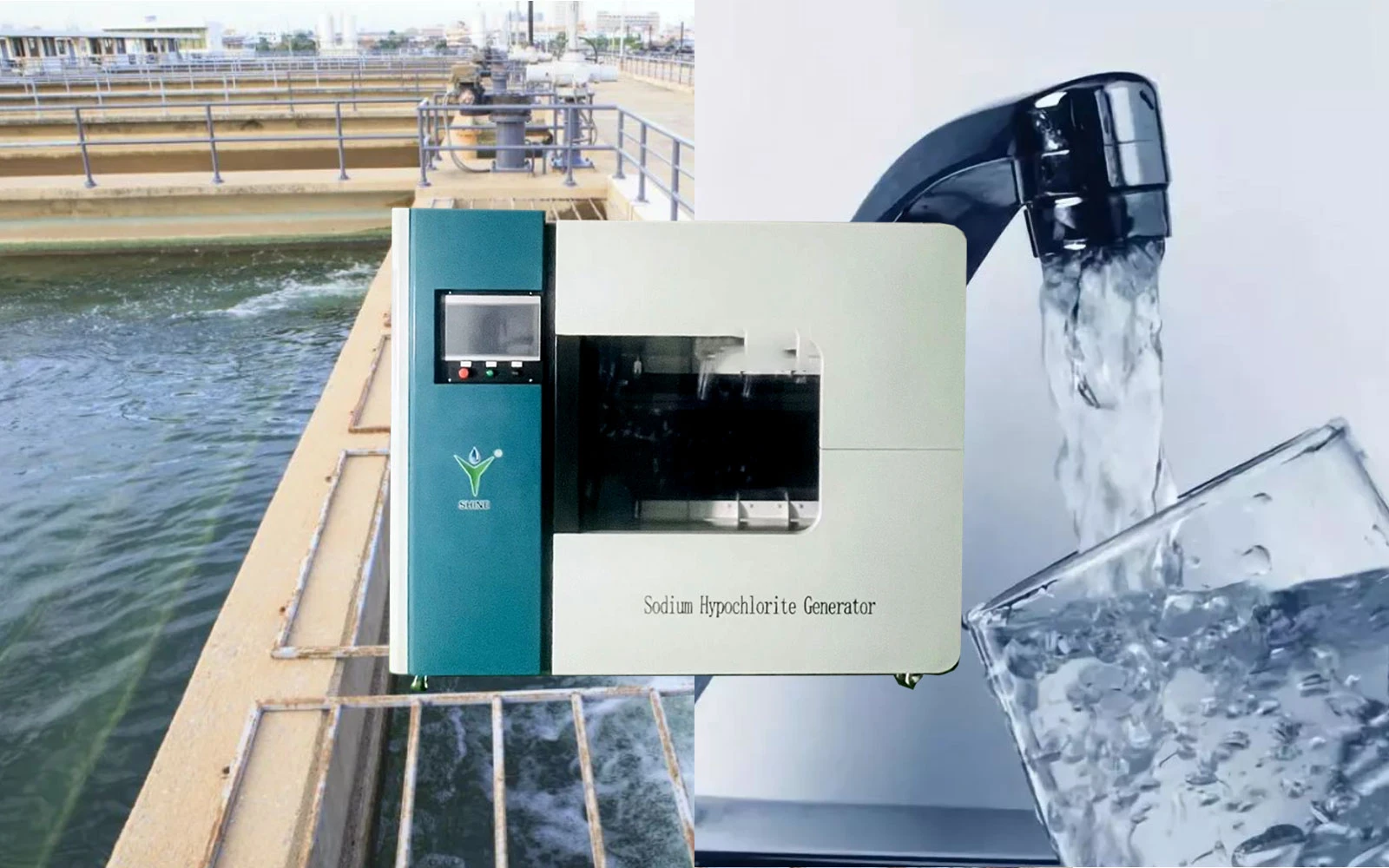Lorem ipsum dolor sit amet...
Water is an essential substance in our lives. Most of the water in nature is not directly drinkable. So, how is it made clean?
There are mainly four technological processes in the conventional water treatment of tap water purification plants: coagulation, sedimentation, filtration, and disinfection. Mainly, harmful components such as suspended substances, colloidal substances, dissolved substances, and bacteria in the water are remove. Finally, it is delivere to thousands of households through the water distribution pump station.
The smell of disinfectant water in tap water is cause by adding an appropriate amount of sodium hypochlorite disinfectant to the tap water for disinfection.
2. Why is tap water disinfected?
Would you really dare to drink tap water without disinfection?
Due to the acceleration of the modern urbanization process and developed industry, a large amount of sewage is directly discharge without treatment, resulting in a certain degree of environmental pollution. A large number of harmful microorganisms such as bacteria have bred in the raw water. If the raw water is directly drink without disinfection, it will cause the human body to get sick or even die due to bacterial infection.
The World Health Organization pointed out in its “Guidelines for Drinking – water Quality”: “The potential consequences of microbial contamination make its control always of the utmost importance and no concessions are ever allow.” Therefore, in order to ensure the safety of drinking water, water treatment plants must conduct a series of sterilization and disinfection of water. In fact, not only tap water, but also the bottled water and barreled water we usually drink have undergone disinfection and sterilization treatment. Thus, disinfection plays an undeniably important role in the supply of safe drinking water.
3. Chlorine is toxic. Is water disinfected with sodium hypochlorite safe to drink?
When it comes to “chlorine”, many netizens may already start to tremble. Yes, chlorine is very active in chemical properties, has a pungent smell and is toxic.
However, tap water is not directly disinfected with chlorine gas. Generally, sodium hypochlorite is used as a disinfectant. Sodium hypochlorite forms hypochlorous acid after hydrolysis, which can effectively kill harmful bacteria in the water. The chlorine – adding treatment process of tap water in water plants is within the national allowable range and will be supply to households only when it fully complies with the national drinking water hygiene standards. So everyone can drink it with confidence.

4. Is the chlorine smell in tap water a sign of excessive chlorine?
In fact, in order to ensure the disinfection effect of tap water. Avoid being pollute by bacteria along the way during pipeline transportation. A certain amount of residual chlorine must be ensure in drinking water. As the protector of water, it can effectively inhibit bacteria in the water distribution network.
China’s “Hygienic Standard for Drinking Water” stipulates that the residual chlorine of centralized water supply at the factory outlet should not be less than 0.3mg/L. And the residual chlorine of water at the end of the pipe network should not be less than 0.05mg/L. So the chlorine smell in tap water is not a sign of excessive chlorine. Instead, because users are at different distances from the water plant. The residual chlorine content in the pipe network will vary to some extent. And different users’ sense of smell for the chlorine smell in water will also be different.
5. Will there still be residual chlorine in boiled water?
Relevant experts said that if a slight chlorine smell is find in tap water. It means that there is residual chlorine in the water, which is a normal phenomenon. If you are worry about the excessive residual chlorine content in the water. Or dislike the taste of this disinfectant water. You can boil the tap water and keep the kettle lid open and let it boil for 1 – 2 minutes. Then the residual chlorine will evaporate with heating.
